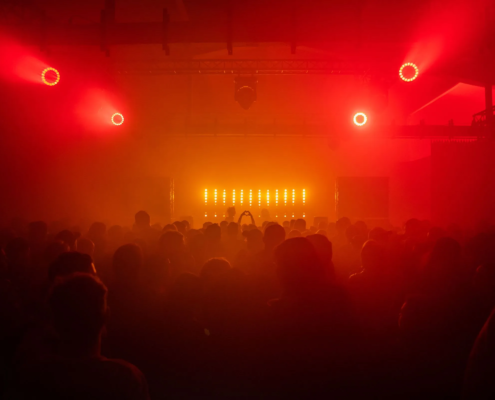As a visual embodiment of this intertwining of themes, Contemporary Cluster hosts from Thursday, March 28th, ‘SPAZIO, the void on which everything lies,’ Cristiano Carotti’s solo exhibition, curated by Domenico de Chirico, visitable until Saturday, May 4th.
Cristiano Carotti, as the gallerist announces, is an alchemist of forms, with the skilful ability to confront matter courageously. Following the concept <<We are the appearance of our destiny through technique>>, he brings to life what wasn’t there before through a vision that finds comfort in technique. In this journey, part of a discourse initiated with the exhibition “Between Dog and Wolf” at the museum of Terni, the artist traces ethereal boundary lines between great extremes. There is a whirlwind of concepts and impulses delving into the unconscious and reasoning about the dichotomy of life and death with the aim of preserving perfect balance and the correct progression of the life cycle. After a profound crisis, man seeks to conquer the pinnacle of knowledge through spiritual refinement; he reclaims his qualities and energies and manages to elaborate a new communication and relationship between space, time, and causality. The essence of this exhibition is indeed a physical and conceptual shift, emphasised by curatorial choices, transitioning from the horizontal to the vertical. The theme of space is approached with the transition from the Anthropised Ecumene, a portion of land traversed and therefore known, to the ascetic Hermitage, the most inaccessible part that detaches from the earthly world.
The overall core of the works features as its main subject the “bare machine,” that analogical vehicle assuming the role of a similar prosthesis in the artist’s life. It is the extension through which he moves between dog and wolf; the essences and souls of the works. In this metamorphic and dynamic journey, where there is a progressive shedding of the outer shell in favour of an inner investigation; the machine is also a visual representation of the intricacies of life and the celestial vault in becoming. Indeed, in each work, the element of spirituality and the symbolism of constellations are concealed. Through the first work, “Venus, the Morning Star,” whose semblance resembles a votive candlestick, themes such as love, passions, and light are explored, drawing also from a spiritual matrix investigating the symbol of the candle as body, soul, and spirit.The luminous note plays a very important role in this initial encounter; indeed, as Cristiano explains, <<coming from a long dark corridor, it incorporates the additional conceptual function of “orienting” and contextualising the observer, providing a fixed point>>.
With the subsequent four works, one delves increasingly into the artist’s esoteric quest and addresses a path that revolves around and connects: man and machine, earthly roots and gravitational absence, eternal life and death. Throughout, there is this exploration of the path and the road, the line between extremes and the passage that emerges in between; there is a sort of metamorphosis of matter and the use of external elements as symbols and totems. The process of crafting behind the works assumes the role and significance of ritual and new rebirth. Through the continuous psychic investigation of the ego and the unconscious, one gradually arrives at a conclusion where light and darkness, origins and present, dog and wolf reaffirm themselves as the artist’s most personal transpositions. Therefore, Cristiano Carotti is a courageous alchemist who, following his instinctive creative flow, is capable of modifying and manipulating matter to arrive at the physical representation of his most abstract concepts.
 https://www.nastymagazine.com/wp-content/uploads/2022/01/65.-Franko-Black-Nasty-Magazine-008.jpg
831
1250
admin
https://www.nastymagazine.com/wp-content/uploads/2015/02/new-logo-basker-WHITE4.png
admin2022-01-12 16:15:332022-01-12 16:37:16Franko B / Blood Sex and Monsters
https://www.nastymagazine.com/wp-content/uploads/2022/01/65.-Franko-Black-Nasty-Magazine-008.jpg
831
1250
admin
https://www.nastymagazine.com/wp-content/uploads/2015/02/new-logo-basker-WHITE4.png
admin2022-01-12 16:15:332022-01-12 16:37:16Franko B / Blood Sex and Monsters















